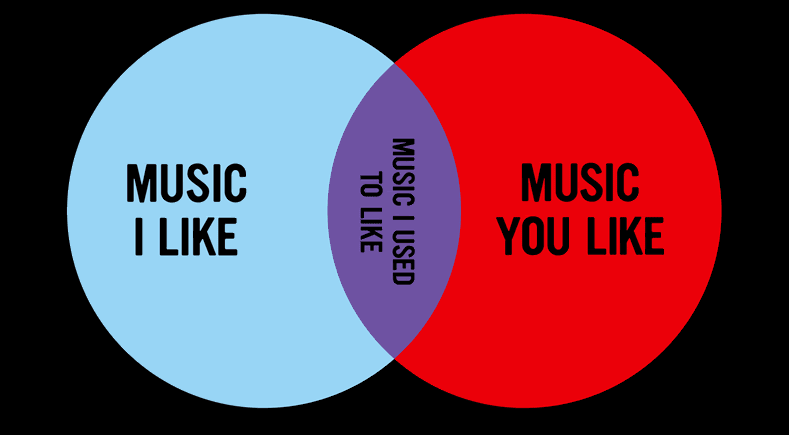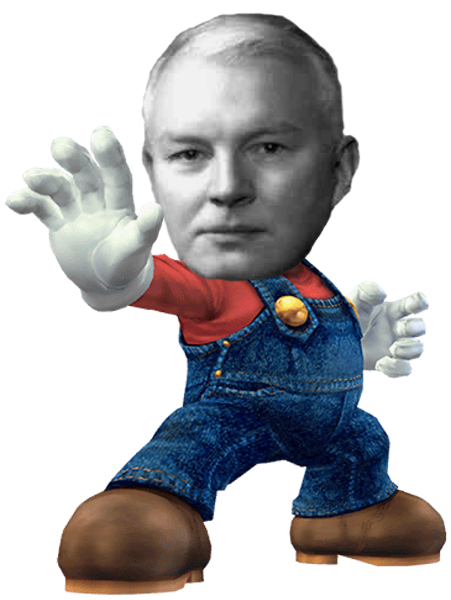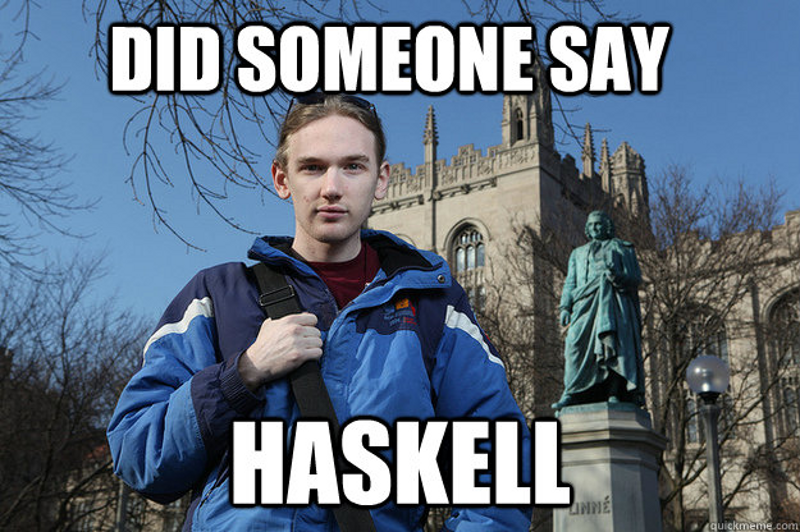What every hipster should know about

Functional Programming
@bodil
The Great Paradigms




I bring greetings from my planet.
tl;dr

You probably haven't heard of them.

for that implementation!

You probably wouldn't understand it.








function hello(): string {
return "Hello everypony!";
}

Functors
A functor is a collection of X that can apply a function f : X → Y over itself to create a collection of Y.
function CAPS(s: string): string {
return s.toUpperCase();
}
/* f : X → Y */
function map(func: (a: any) => any, list: any[]): any[] {
...
}
var ponies = [ "Rainbow Dash", "Pinkie Pie", "Twilight Sparkle" ];
var ponies = [ "Rainbow Dash", "Pinkie Pie", "Twilight Sparkle" ];
function tooCool(s: string): bool {
return s != "Rainbow Dash";
}
function filter(func: (any) => bool, list: any[]) {
var new_list = [], i;
for (i = 0; i < list.length; i++) {
...
}
return new_list;
}

var ponies = [ "Rainbow Dash", "Pinkie Pie", "Twilight Sparkle" ];
function add(a, b) {
return a + b;
}
function reduce(func: (a, b) => any, list: any[], initial) {
...
}
function CAPS(s: string): string {
return s.toUpperCase();
}
function map(func, list: any[]) {
return list.map(func);
}
var ponies = [ "Rainbow Dash", "Pinkie Pie", "Twilight Sparkle" ];
function reduce(func: (a, b) => any, list: any[], initial) {
var result = initial, i: number;
for (i = 0; i < list.length; i++) {
result = func(result, list[i]);
}
return result;
}

function reduce(func, list: any[], initial) {
return list.reduce(func, initial);
}
var ponies = [ "Rainbow Dash", "Pinkie Pie", "Twilight Sparkle" ];
function CAPS(s: string): string {
return s.toUpperCase();
}
function shoutyMapReducer(a: string[], b: string): string[] {
return a.concat([b.toUpperCase()]);
}

function square(x: number) {
return x * x;
}
var pinkie = {
name: "Pinkie Pie",
type: "Pegasus Pony"
};
function ponyType(pony): string {
return pony.type;
}

function CAPS(s: string): string {
return s.toUpperCase();
}
function hi(s: string) {
return "Hello " + s + "!";
}

function CAPS(s: string): string {
return s.toUpperCase();
}
function hi(s: string) {
return "Hello " + s + "!";
}
function add(...args: number[]) {
return args.reduce(function(a,b) { return a + b; })
}
function amap1(func: Function, args: any[], lists: any[]) {
var new_list = [], list, i;
if (lists.length) {
list = lists[0];
for (i = 0; i < list.length; i++) {
new_list = new_list.concat(amap1(func, args.concat([list[i]]), lists.slice(1)));
}
return new_list;
} else {
return func.apply(null, args);
}
}
function amap(funcs: Function[], ...lists: any[]) {
var new_list = [], i;
for (i = 0; i < funcs.length; i++) {
new_list = new_list.concat(amap1(funcs[i], [], lists));
}
return new_list;
}
var ponies = [ "Rainbow Dash", "Pinkie Pie", "Twilight Sparkle" ];

Currying
The act of transforming a function of several arguments into a chain of functions of one argument that will yield the same result when called in sequence with the same arguments.
f(x, y, z) = g(x)(y)(z)
Currying
Named for Haskell Curry, who rediscovered the concept originally originated by Moses Schönfinkel.
Thus a more accurate name would be schönfinkeling.
function curry(func: Function, arity: number) {
return function(x) {
if (arity === 1) {
return func(x);
} else {
return curry(func.bind(null, x), arity - 1);
}
};
}
function add(...args: number[]) {
return args.reduce(function(a,b) { return a + b; })
}
function partial(func: Function, ...curriedArgs: any[]) {
return function(...args: any[]) {
return func.apply(this, curriedArgs.concat(args));
}
}
function add(...args: number[]) {
return args.reduce(function(a,b) { return a + b; })
}



The Three Monad Laws
- A monad may not injure a human being or, through inaction, allow a human being to come to harm.
- A monad must obey the orders given to it by human beings, except where such orders would conflict with the First Law.
- A monad must protect its own existence as long as such protection does not conflict with the First or Second Laws.

The Elements of Harmony
-
Applejack
- Honesty
-
Fluttershy
- Kindness
-
Pinkie Pie
- Laughter
-
Rarity
- Generosity
-
Rainbow Dash
- Loyalty
-
Twilight Sparkle
- Magic
function _compose(func1, func2) {
return function(x: any) {
return func2(func1(x));
}
}
function compose(...funcs: Function[]) {
if (funcs.length === 1) return funcs[0];
if (funcs.length === 2) return function(x: any) {
return funcs[1](funcs[0](x));
}
var tailfunc = funcs.pop();
return _compose(tailfunc, compose.apply(null, funcs));
}
function children(node: Element): Element[] {
var new_list = [], i;
for (i = 0; i < node.childNodes.length; i++) {
new_list.push(node.childNodes.item(i));
}
return new_list.filter((node) => node instanceof Element)
}
var ponies = document.getElementById("ponies");
children(ponies);

Zygohistomorphic prepromorphisms
Used when you really need both semi-mutual recursion and history and to repeatedly apply a natural transformation as you get deeper into the functor. Zygo implements semi-mutual recursion like a zygomorphism. Para gives you access to your result à la paramorphism.

I bring greetings from my planet.
Thank you

